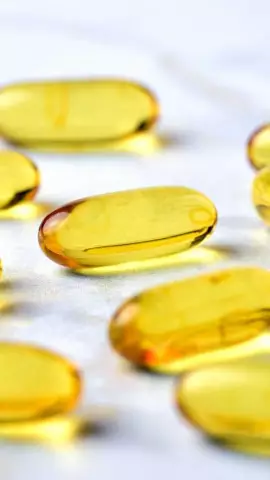- Author Rachel Wainwright [email protected].
- Public 2023-12-15 07:39.
- Last modified 2025-11-02 20:14.
Seaweed
Useful properties of algae and their application
Algae grow in sea, fresh water, on rocks, in soil and trees, and represent the main organic matter of our planet.

Algae are eaten by both animals and people, and they represent 80% of the biomass on Earth, emit a huge amount of oxygen into the atmosphere - more than half of its annual volume produced by plants.
Green algae are distinguished by a high nutritional value, red and brown algae also emit. The composition of algae includes proteins (40-45%), carbohydrates (30-35%), fats, organic acids, vitamins A, C, B, magnesium, sulfur, iodine, active substances: pectins, polysaccharides, galactins, chlorophyll derivatives, sterols, carotenoids.
Due to this composition, algae have anti-inflammatory, immunomodulatory, radioprotective, antimutagenic, antibacterial, antiviral effects. Therefore, it is recommended to eat algae, in addition, they are actively used in cosmetology.
Due to its beneficial properties, kelp algae are most widespread, they are also called seaweed. Kelp is referred to as brown algae, and is considered a balanced natural complex, recommended for regular use. These sea plants prevent atherosclerosis, since they inhibit the process of deposition of cholesterol on the walls of blood vessels, stimulate immunity, stop the growth of tumors, increase blood clotting and prevent thrombus formation, restore the functioning of the nervous, respiratory systems and impaired digestion, and increase efficiency.
Hormone-like substances have also been found in algae, and they can be used in the treatment of sexual dysfunction in men and women. A therapeutic dose of seaweed is two teaspoons a day. Moreover, it is useful in dried, pickled form.
In addition to kelp, you can eat algae kelp, nori, dale, hijiki, wakame.
Cosmetologists noted such beneficial properties of algae - they moisturize, heal and tone the skin, accelerate its healing, help fight inflammation and acne. Outwardly, red algae, blue-green spirulina, chlorella, fucus and kelp are most often used. They are used to accelerate hair and nail growth, skin care, cellulite treatment: seaweed wraps and masks are practiced. The procedures are recommended to be carried out at least once every four days. Already after several sessions, the manifestations of cellulite are noticeably reduced, the inflammation of the skin subsides, it smoothes, becomes more elastic.

Contraindications
Algae should not be eaten by those who have an excess of iodine in the body or are allergic to this element (for the same reason, wraps, algae masks may be contraindicated).
In addition, it is undesirable to use plants for nephritis, diseases of the digestive system, diathesis, furunculosis, urticaria, during pregnancy and in other conditions in which preparations containing iodine are contraindicated. Excessive consumption of seaweed can lead to iodism, which manifests itself in the form of mucosal lesions (laryngitis, rhinitis, bronchitis, tracheitis, conjunctivitis), increased salivation and lacrimation. A person may feel a general malaise, he may have a fever. Also, with iodism, skin rashes often appear - the so-called iodine acne on the trunk and face.
There is no age limit for the use of algae.
YouTube video related to the article:
Found a mistake in the text? Select it and press Ctrl + Enter.






